|
W.W.
Boes Company in World War Two
Dayton, OH
1940-1950
This page updated 9-4-2022.
Initial operations of the W.W. Boes Company
began in July 1940 for the manufacture of electrical instruments at 3001
Salem Avenue in Dayton. In February 1942, the W.W. Boes Company
incorporated to enable the company to be more capable of manufacturing
precision flight instruments and compasses for the war effort.
Prior to incorporating, the company had been a partnership which was
manufacturing electrical and photographic instruments. Funding
from the issue of the stock was partially used to erect a new 40x80-foot
one story building at its location at 3001 Salem Avenue. The new
addition tripled the size of the Boes factory.
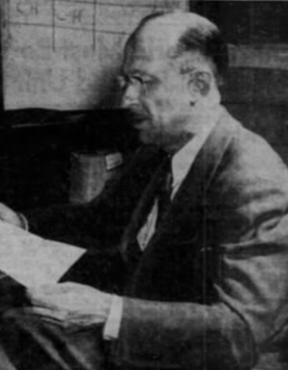
This is Mr. Boes in 1942. He was 50
years old, having been born in 1892. He passed away in 1959.
Previous to starting the W.W. Boes Company, Mr. Boes was a salesman for
the Hickok Electrical Company.
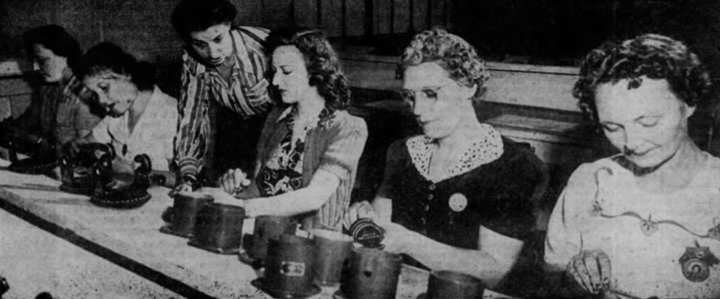
This all-woman assembly line is producing the Astro-Compass Mk II for
the Army Air Forces. In August 1942, 90%, or 135, of the company's
150 employees were women. The women also operated drill presses,
lathes, and other machine tools to make the small parts needed in the
flight instrument and the Astro-Compasses.
In early 1946, it was
announced that the W.W. Boes Company was being split into two companies.
The Stanhope Products Company was formed to develop and manufacture 35mm
film equipment and radio test equipment. The new Stanhope Products
Company was originally based at 3001 Salem Avenue but later moved to
1059 South Patterson Avenue in Dayton. Mr. Boes also
announced that the 3001 Salem Avenue location would be sold. In 1957
the W.W. Boes Company also moved to the South Patterson Avenue location.
On January 13, 1950, the
historical record shows that Mr. Boes was still president of the W.W.
Boes Company. However, in October 1950, Mr. Boes was
named chief deputy director for the Dayton and Montgomery Civil Defense.
It has to be assumed that he closed down the company at that time, as
there is no more information on it in the historical record. Mr. Boes was a salesman at heart, and in 1951 he began selling real estate
in the Dayton area. For ten years, he was president of his own
instrument company that was no doubt boosted by the need for such
equipment in World War Two. He continued to sell real estate until
1958, when he moved to southern California. He spent the last year
of his life there.
Mr. Boes was always interested in aviation and owned his own aircraft.
In 1946 he was the Chairman of the Dayton Airshow that was held on July
19-21, 1946, at the Dayton Municipal Airport. He may have well
been the first chairman of the Dayton International Airshow that
continues as an annual event even to this day. I have attended the
Dayton Airshow many times over the years and find it most interesting
that Mr. Boes was a key figure in getting this long running show going.
W.W. Boes Company World War Two
Products: Table 1 shows that the company's first product for
the war effort was airplane instruments. This was its second
largest contract in dollar value. The second contract, for
$847,000, was the largest of the contracts. It was the first of
four contracts for Astro Compasses, which was the company's signature
product during World War Two. In total, the company had four
contracts for the product for a total of $1,001,000 which was 40% of the
W.W. Boes' total war contracts.
Table 1 - W.W. Boes Company's
Major World War Two Contracts
The information below
comes from the "Alphabetical Listing of Major War Supply
Contracts, June 1940 through September 1945." This was
published by the Civilian Production Administration,
Industrial Statistics Division. |
|
Product |
Contract Amount |
Contract Awarded
|
Completion
Date |
|
Airplane Instruments |
$748,000 |
1-1942 |
5-1943 |
|
Compasses |
$847,000 |
1-1943 |
1-1944 |
|
Communication Equipment |
$78,000 |
9-1943 |
11-1943 |
|
Astro Compasses |
$70,000 |
1-1944 |
2-1944 |
|
Astro Compasses |
$51,000 |
4-1944 |
10-1944 |
|
Electric Switches |
$95,000 |
1-1945 |
3-1945 |
|
Coupling Units |
$164,000 |
3-1945 |
5-1945 |
|
Electric Switches |
$168,000 |
3-1945 |
8-1945 |
|
Astro Compasses |
$132,000 |
4-1945 |
11-1945 |
|
Test Sets |
$151,000 |
7-1945 |
12-1945 |
|
Total |
$2,504,000 |
|
|
\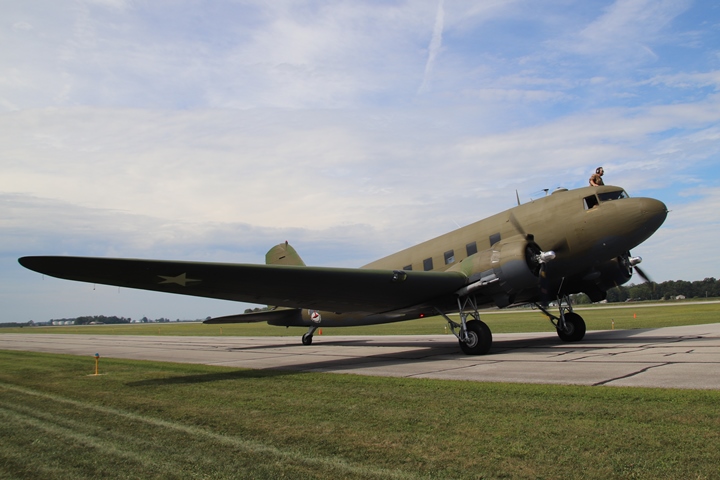
The W.W. Boes Astro Compass was used by
navigators in many Army Air Force multi-engine aircraft during World War
Two. A few examples are such well known aircraft as the B-17,
B-24, B-25, B-26, and the C-53 shown here. This was long before
the introduction of the current GPS that is now used for aviation
navigation. A navigator was a necessary part of the crew to make
sure the aircraft arrived safely at it destination. Author's photo
added 9-4-2022.
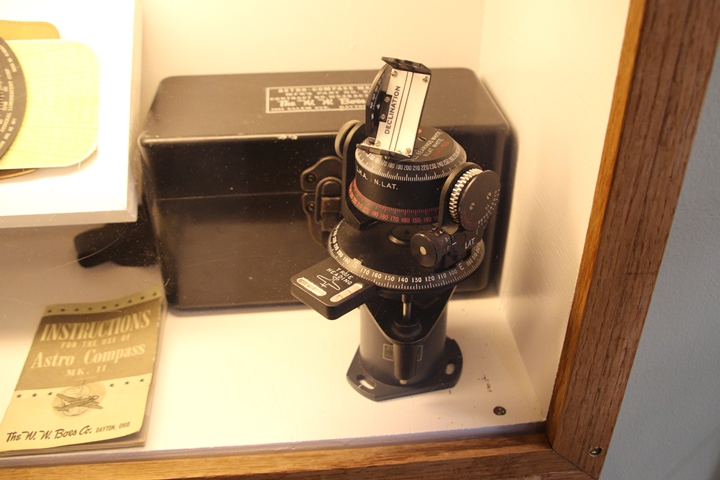
This W.W. Boes Company Astro Compass MK. II,
instruction manual, and carrying case are on display at the USAF
Armament Museum outside of Eglin AFB, FL. Author's photo.
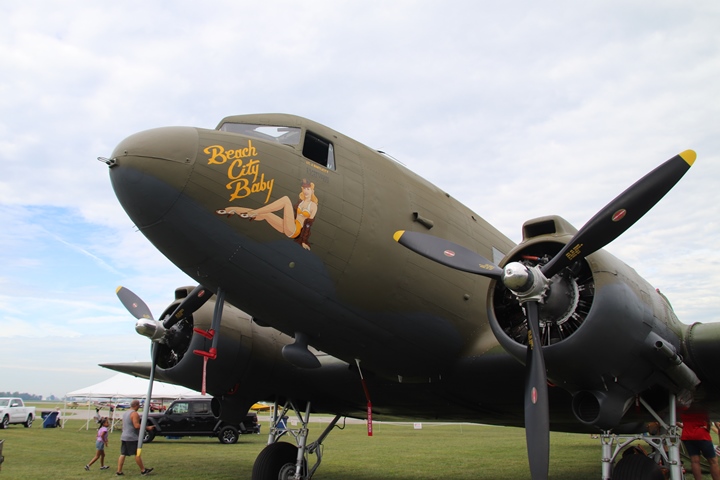
I have been involved with warbirds for most
of my adult lifetime and have seen many World War Two aircraft that have
been restored to flying condition. C-53 "Beach City Baby" is the
most well restored to World War Two configuration that I have ever seen.
The Vintage Wings, Inc. took six years to restore what was a derelict
C-53 sitting at the Beach City, OH airport into the most historically
accurate C-47/53 flying today. Author's photo
added 9-4-2022.
This C-53 served in North Africa with the Air
Transport Command. After the war, it was used as a commercial
airliner until in 1963 it became "Buckeye One" and was the Governor of
Ohio's personal aircraft until 1983. This is truly a historic
aircraft.
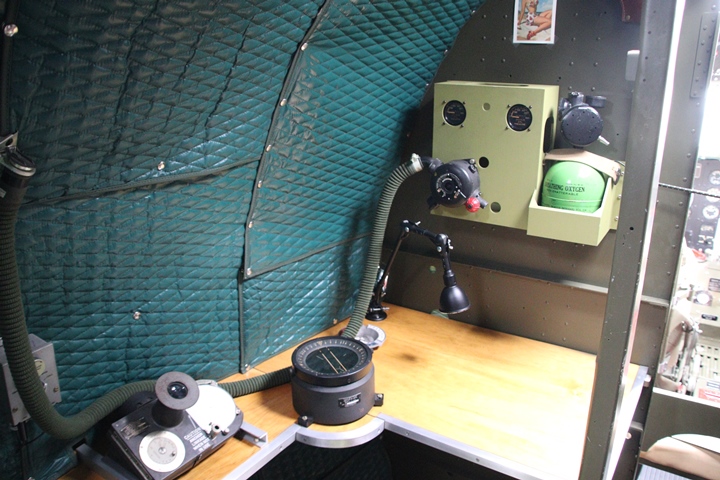
This is the navigator's position on the
"Beach City Baby." Here, the navigator plotted the C-53's
course and provided the information to the flight crew just forward of
this station. The navigator had a compass, drift meter, and not
shown in this photo an Astro-Compass allowing him to keep the C-53 on
course. Author's photo added 9-4-2022.
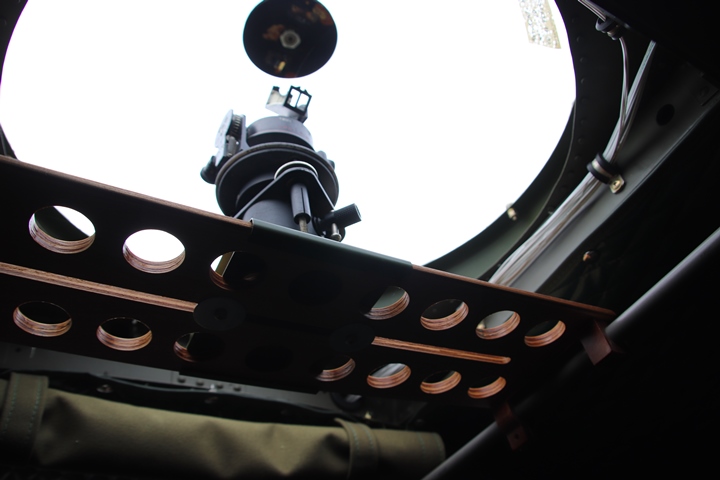
In the astrodome above the navigator's
station was the Astro Compass. This is the only World War Two
aircraft I have been in where the Astro Compass is mounted in the
astrodome. Here the navigator could determine true north by
sighting the moon, sun, or the stars. Author's photo added 9-4-2022.
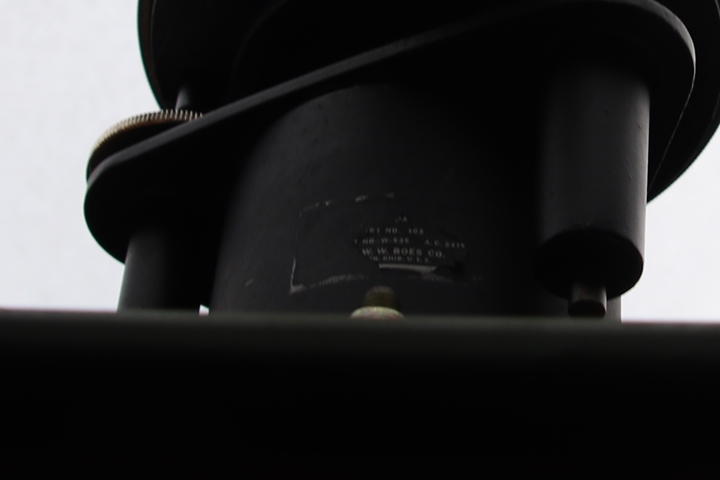
While most of the data plate on the Astro Compass
is missing, the name W.W. Boes remains. Author's photo added
9-4-2022.
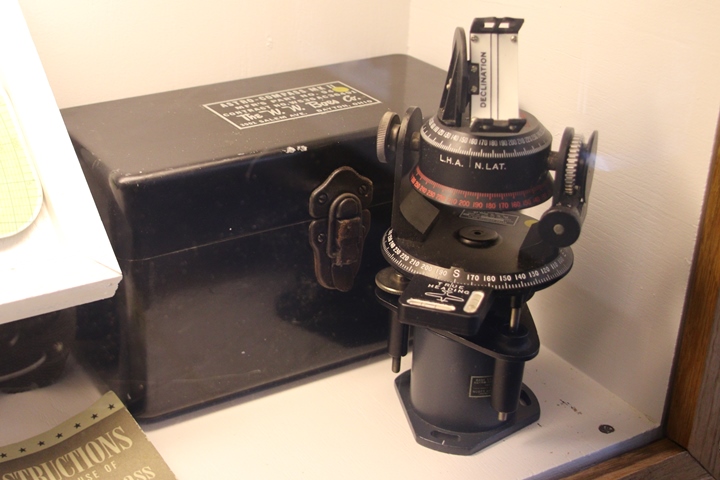
Here is a continuation of the photos
of the W.W. Boes Astro Compass at the USAF Armament Museum outside of
Eglin AFB, FL. Author's photo.
The Astro Compass MK. II
was designed to provide the navigator of a multi-engine aircraft with three vital
pieces of information. They were:
-
True heading of the
aircraft
-
True bearing of a
distant object
-
Positive method of star
identification
This was accomplished by
mounting the compass in the navigator station and sighting it on a known
star. The bearing of the aircraft was then determined by using and
aligning the different indexing scales on the instrument.
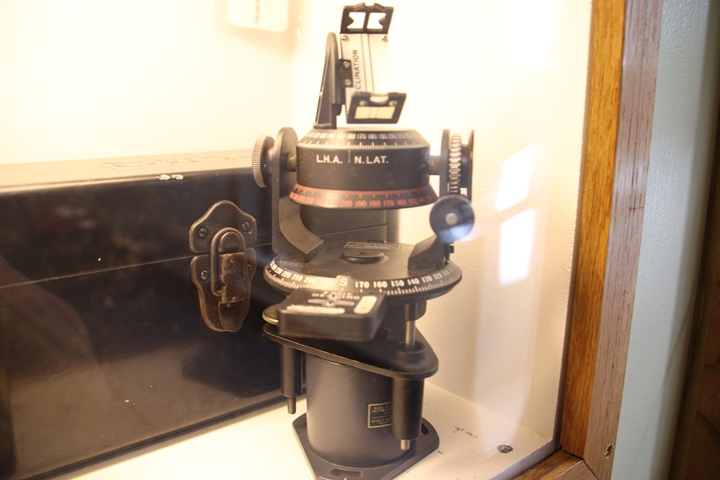
Author's photo.
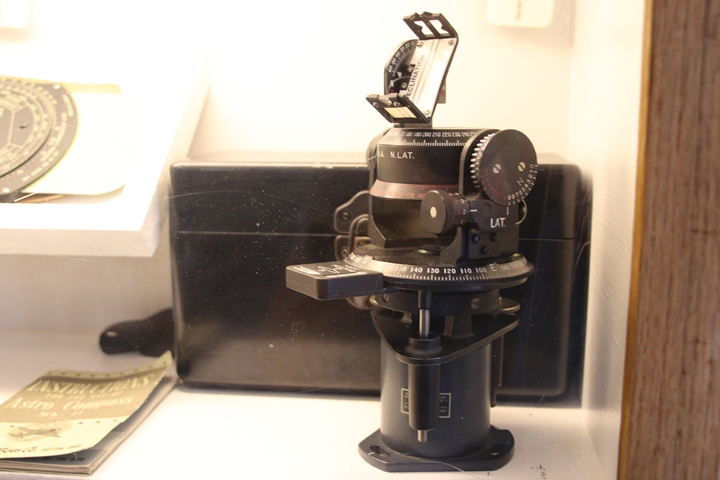
Author's photo.
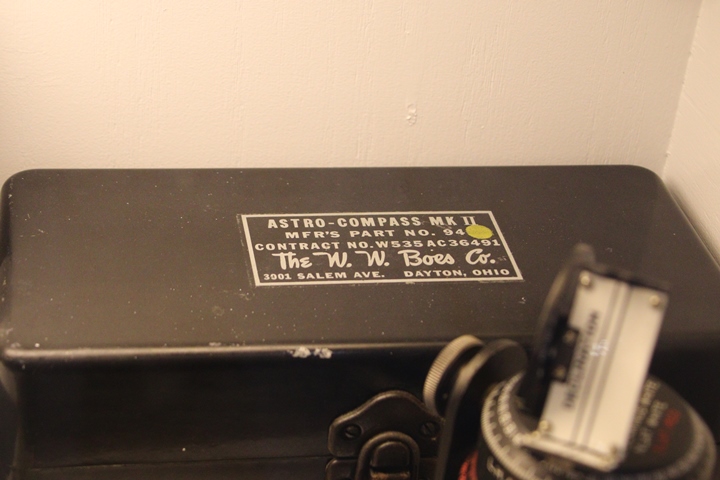
Contract no. W 535 AC 36491 was the contract
dated 1-1943 to 1-1944. This particular Astro Compass was part of
the first and largest contract for this type of instrument.
Author's photo.
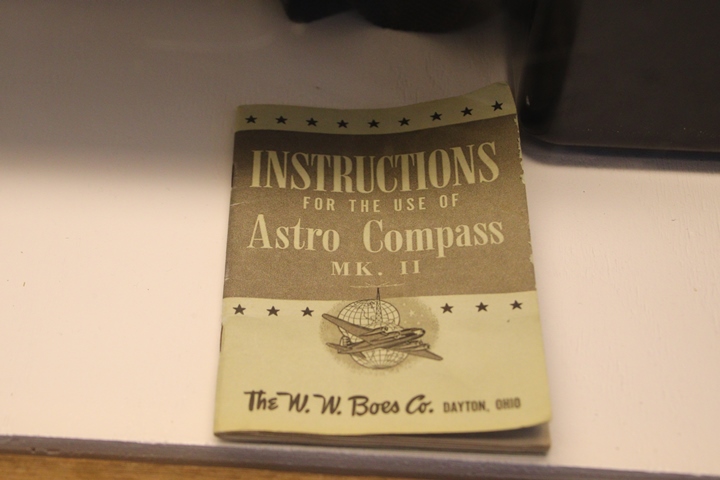
Author's photo.
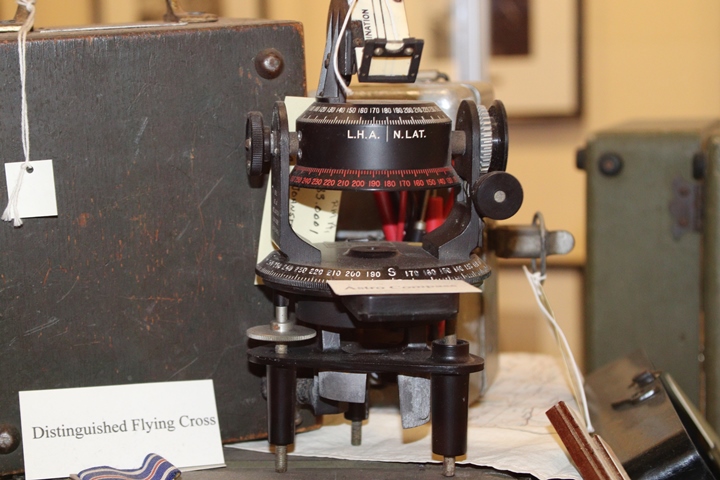
This W.W. Boes Astro Compass is on display
at the National Museum of the Mighty Eighth Air Force Museum in
Pooler, GA. Author's photo added 8-4-2022.
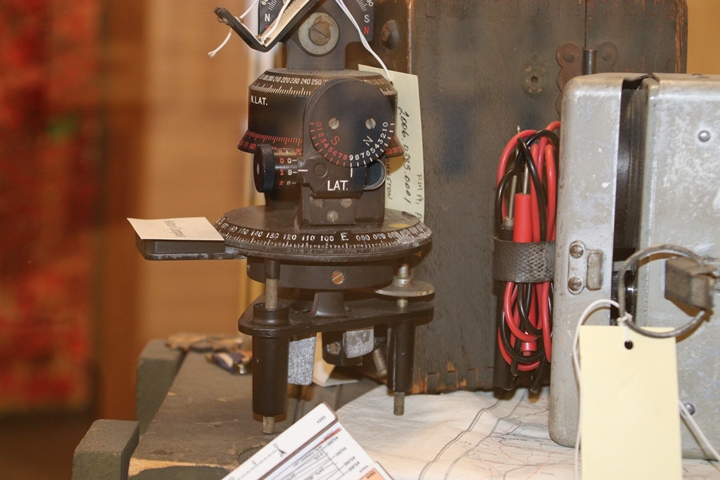
Author's photo added 8-4-2022.
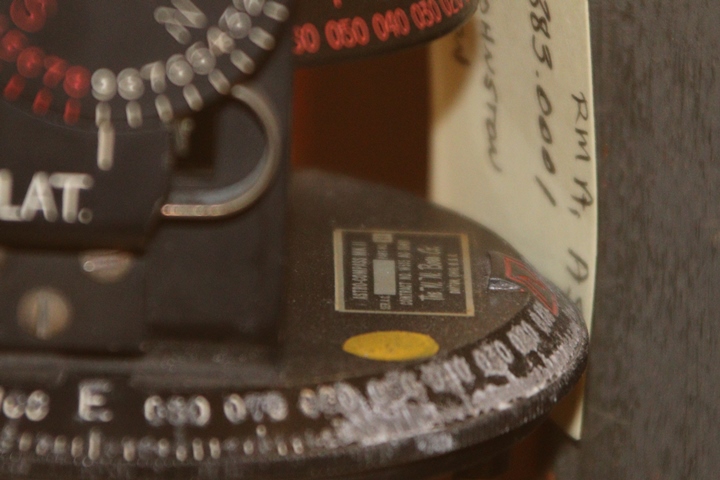
The name "The W. W. Boes Co." can be seen on
the data plate. Author's photo added 8-4-2022.
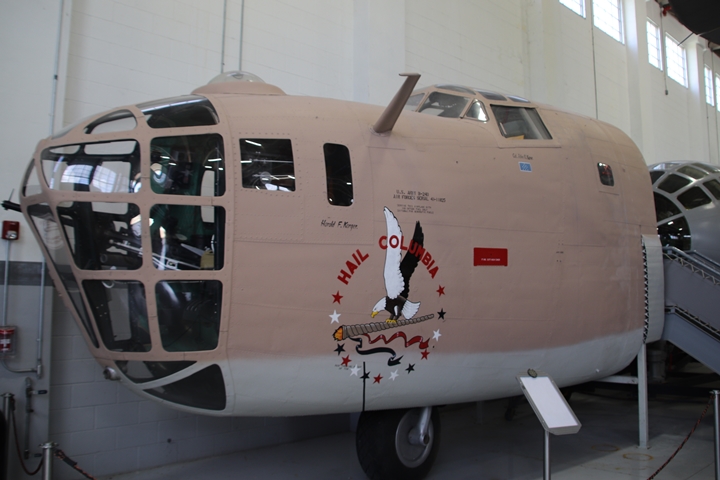
This cockpit section of a B-24D is on
display at the Fantasy of Flight Museum in Polk City, CA. The
navigator's station was in the front section of the aircraft underneath
the astrodome on top of the aircraft. Author's photo added
8-4-2022.
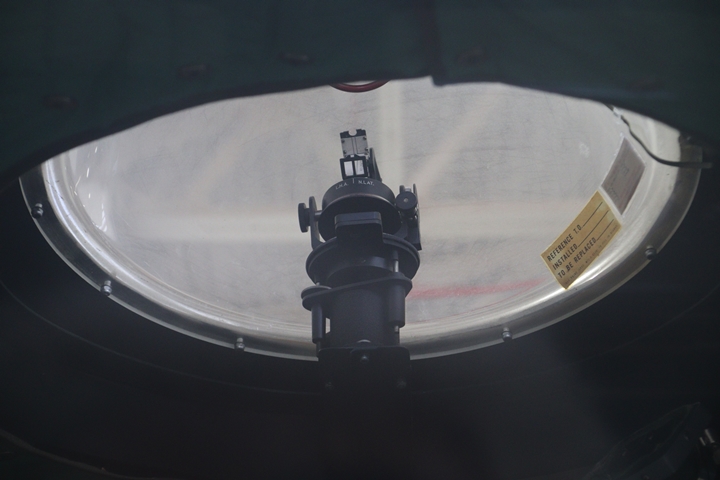
This image shows how the Astro compass was
located in the astrodome for the navigator's use. Author's photo
added 8-4-2022.
The following photos are from the operating instructions for the Astro
Compass, MK. II.
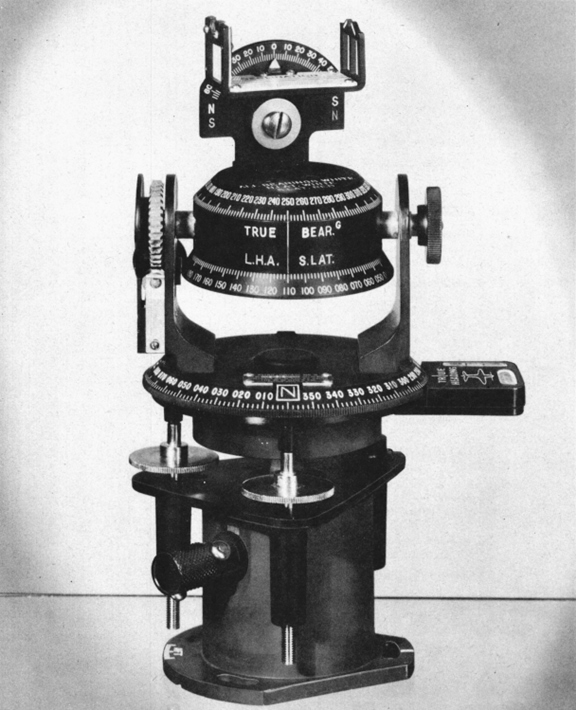
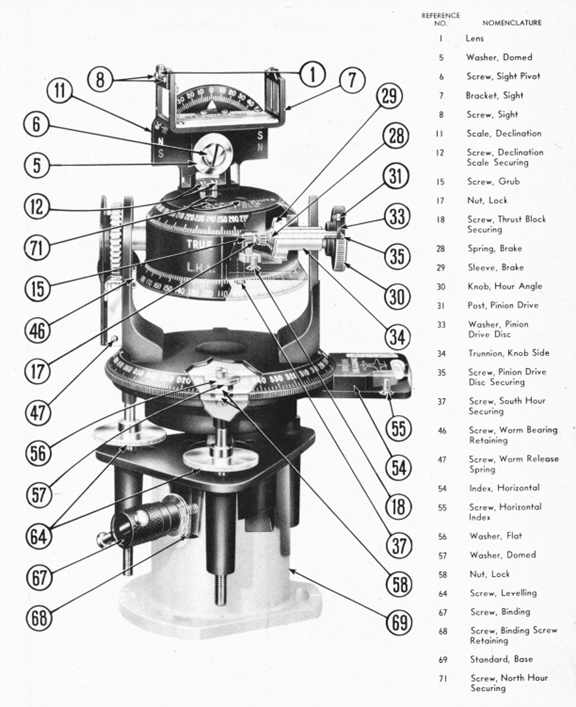
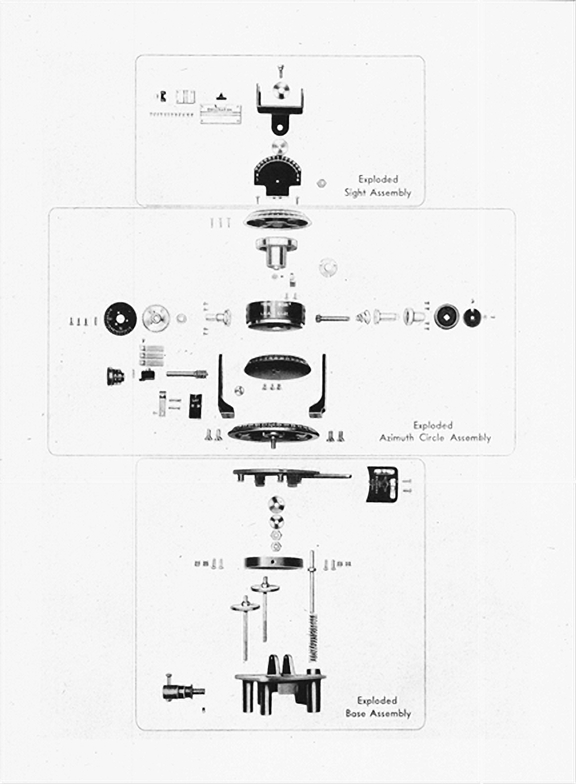
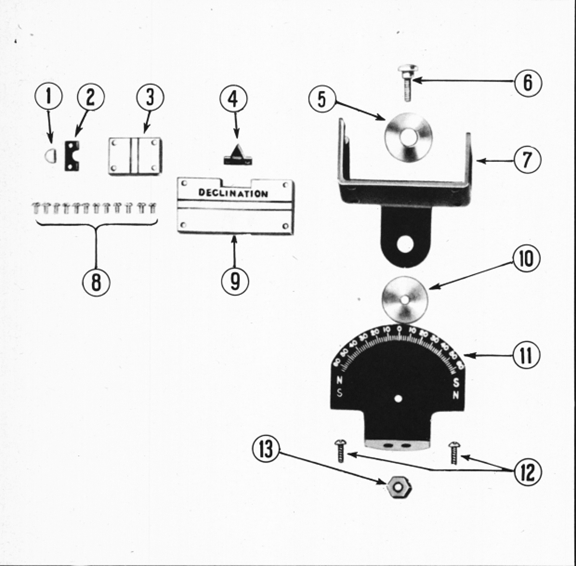
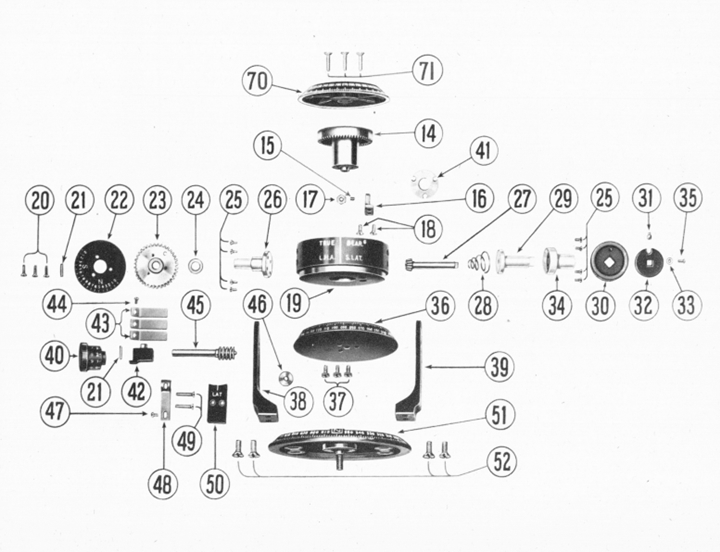
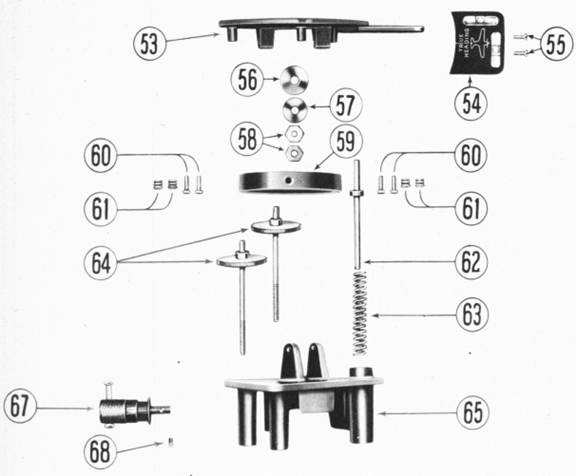
|























